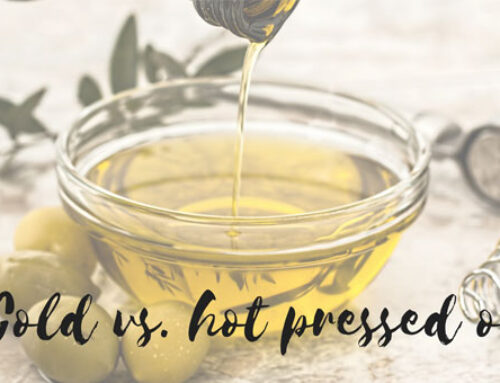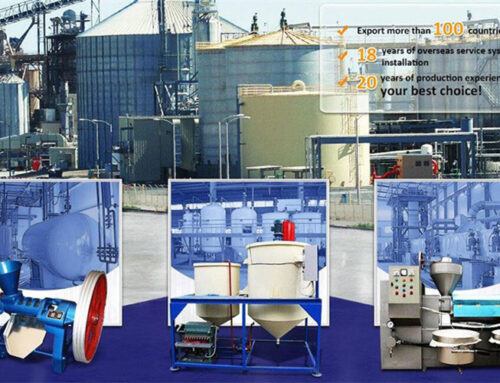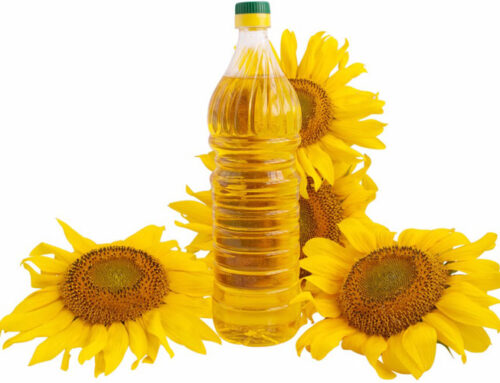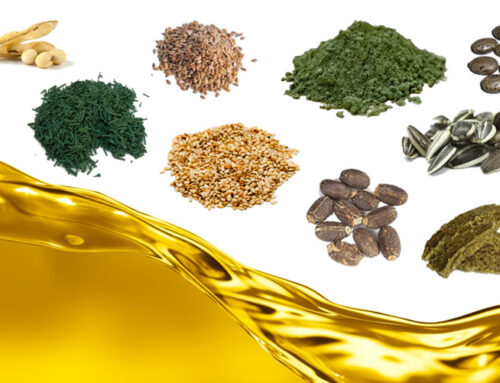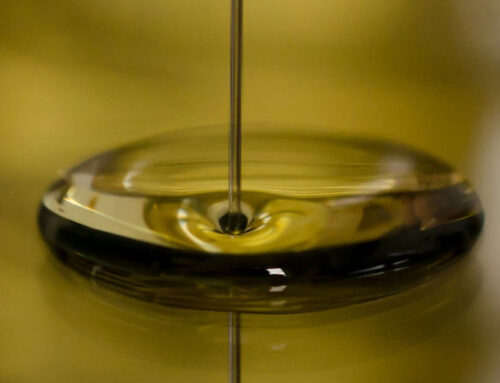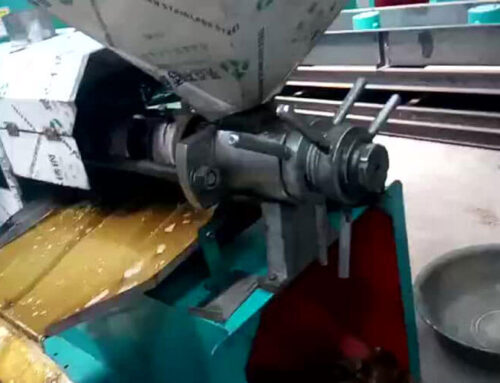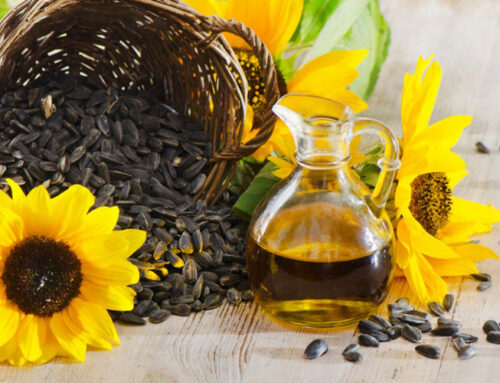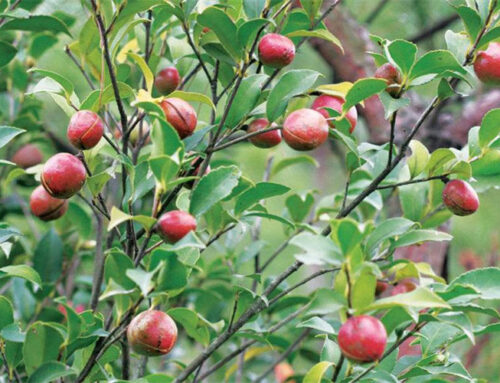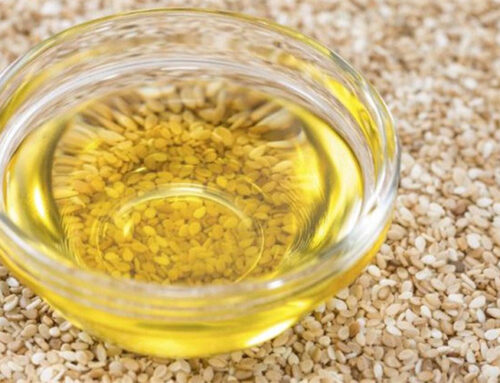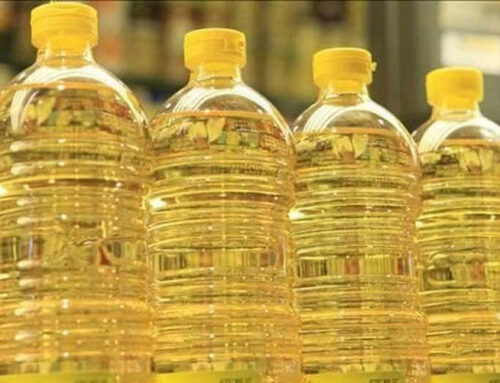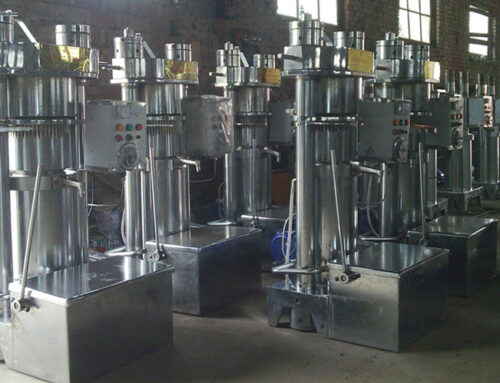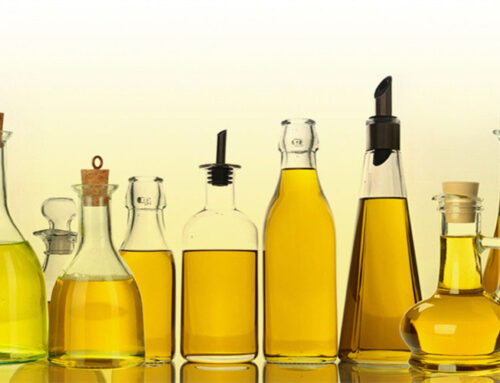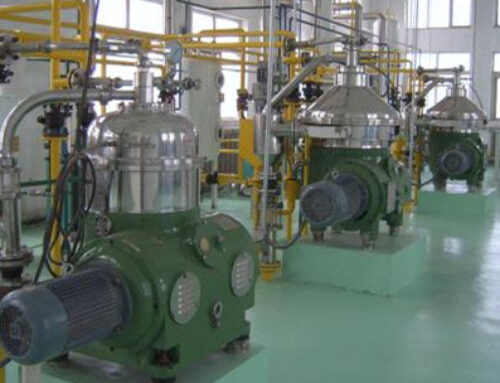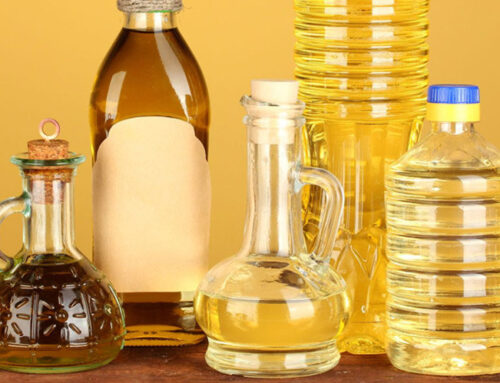|
|
|
|
| Faults | Reasons | Solutions |
| Mandrel stops running | ① Feed lots of materials before grinding the pressing chamber hot. ② The cakes are too dry when grinds. ③ The cake is too thin and the pressing chamber pressure increases. ④ Solid materials jam the pressing chamber. |
① Feed materials after the oil cake coming out. ② Increase the cake moisture. ③ Adjust the bolt to increase the cake thickness. ④ Switch off the electricity and clean the pressing chamber. |
| The materials can’t be charged in or the oil can’t outflow | ① The pressing screw is not smooth. ② The pressing chamber has oil in it, the oil material and oil mixes. ③ The oil grooves of pressing strip and pressing ring are jammed. ④ The oil material moisture is too low when choosing hot squeezing. |
① Grind the pressing screw with oil cakes. ② Squeeze oil materials by adding some cakes. Refeed materials gradually. ③ Take down the pressing strips and rings, soak them for ten minutes with hot water, then clean them. ④ Ensure suitable oil material moisture. |
| Abnormal cake outlet | ① Squeezing-in moisture is too low. ② Squeezing-in moisture is too high. |
① Add water. ② Dry the materials. |
| Locknut exudes oil | ① The pressing screw end faces have residues, and there forms a gap. ② The locknut doesn’t compress the pressing screw tightly. |
① Stop the oil press machine and clean the pressing screw end faces. ② Tighten the locknut. |
| Locknut exudes oil | ① The pressing screw end faces have residues, and there forms a gap. ② The locknut doesn’t compress the pressing screw tightly. |
① Install the pressing rings correctly. ② Thicken the cake thickness. ③ Change the machine parts, choose pressing strips and rings that fit for pressing high oil content oil materials. ④ Clean the oil groove. |
| Low oil yield | ① The pressing screw and pressing rings are not smooth. ② Oil materials contain too much moisture. ③ The cake is too thin. ④ The pressing screw is worn down. ⑤ Squeeze too many times. |
① Grind the pressing screw and pressing rings smooth with oil cakes. ② Decrease the oil material moisture. ③ Increase the thickness of cakes. ④ Replace new pressing screw. ⑤ Adopt hot squeezing. |
| Residue overflows seriously | ① Oil grooves of pressing strip and pressing ring are too deep. ② The cake is too thin and the pressing chamber pressure is too big. ③ The pressing rings were not compressed tightly. ④ Squeeze too many times. ⑤ The machine parts wore down. ⑥ Oil materials are too dry. |
① Adjust the position of pressing strip and ring. ② Increase the thickness of cakes. ③ Compress the pressing rings tightly. ④ Decrease the squeezing times. ⑤ Change the parts. ⑥ Improve the oil material moisture. |
| Pressing cage fractures | ① Feed too many raw materials suddenly when the machine starts running. ② Metal object enters the pressing chamber. ③ The oil cake is too dry when the machine does grinding-in. ④ Feed forcibly when the gap between the adjustable cake head and the cake-out ring is too small. ⑤ Squeeze too many times and don’t add water to the materials. ⑥ Feed abundant materials without clean the residual cakes. |
① You should feed slowly first, then add more materials after the oil cake coming out. ② Choose and clean the raw oi material carefully. ③ Add proper water to the oil cakes. ④ Increase the gap. ⑤ Add some water to the materials to low the pressing chamber pressure. ⑥ Start the machine after cleaning the residual cakes. |
| Pressing cage fractures | ① Reverse the mandrel forcibly when the mandrel locks. ② Reverse the big v-belt pulley forcibly when the mandrel locks. |
① It is strictly prohibited to reverse the mandrel. ② It is prohibited to reverse the big v-belt pulley. |
| Mandrel breaks off | ① The bearing elastic ring is reversed. ② Overwind the nut and lead to crushing of the bearing. |
① Install the elastic ring correctly. ② There should be a certain gap between end faces of nut and bearing. |







